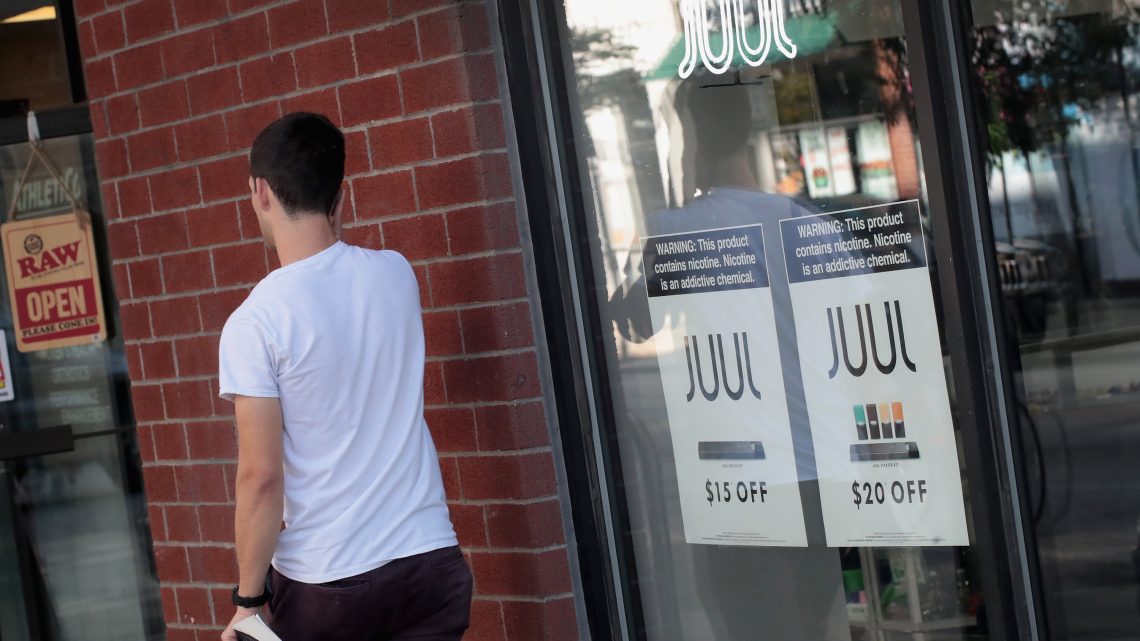
Here’s More Evidence That Flavors Aren’t the Reason Teens Vape
December 10, 2019During a meeting Donald Trump held about the vaping epidemic in November, Mitt Romney suggested a reason for the spike in teenage usage: unicorn poop.
Trump had invited both critics and advocates for e-cigarettes to the gathering in a rare moment of civilized debate, as if he were actually looking to better understand the issue. He had been waffling for weeks about what to do, entertaining at one point a full-on ban of flavored vaping products, though his campaign staff reportedly talked him out of it, fearing that such a strategy could antagonize a chunk of his political base. Many of the attendees urged prohibition, an approach that several states and localities like San Francisco and New York City had already adopted (or attempted to), emphasizing the same point: that flavors—unicorn poop among them—are responsible for hooking the kids all this time. It's been something of their refrain.
But new data released last week by the Centers for Disease Control and Prevention (CDC) suggest this may not be the case. Or at least it's not the full story. The statistics, culled from part of the 2019 National Youth Tobacco Survey (NYTS), offer a different rationale: being young and a tiny bit reckless. This, in turn, has implications amid a spate of vape bans nationwide, which have often been framed by policymakers as in part about protecting kids.
When questioned about why they had ever tried an e-cigarette, 55 percent of student respondents attributed it to curiosity. Behind that response, the second-most popular answer was because "a friend or family member used them," at 30.8 percent, and third was that "they are available in flavors, such as mint, candy, fruit, or chocolate," at 22.4 percent. Surprisingly, there was no explicit option for desiring the rush of nicotine—the addictive head high that longtime smokers have been chasing for centuries (or, in the more appropriate vernacular of our times: getting domed.) "Doing tricks" was not far behind flavors among the categories that were included.
Are you a current or former JUUL employee, or do you know something about the company or vaping industry or weed policy that we should? Using a non-work device, you can contact Alex Norcia securely via Signal at 201-429-7024 or email at alex.norcia@protonmail.com.
Much of the press attention for those numbers has fallen, well, on the sheer numbers—and primarily the fact that "nearly one in three high school students has reported using a tobacco product recently," as the New York Times wrote. But missing from the conversation, as vaping activists and public-health consultants in the United Kingdom have already noted, is the notion that flavors might not be what is mainly driving teenagers to experiment.
While banning flavors has been the chorus from anti-tobacco crusaders like Democratic presidential candidate Michael Bloomberg, the opposite has been true for adult vapers: They have argued, endlessly, that e-cigarettes are a harm-reduction tool and a safer alternative to smoking. More importantly, they have insisted that it is precisely the flavors—the option to disassociate a nicotine rush from the taste of tobacco—that has helped them to ditch deadly combustible cigarettes for vaping. Prohibition-like tactics, in their eyes, risk putting a damper on this perceived success—and, as war on drug experts have pointed out, could bolster a potentially dangerous black market.
Of course, it's no wonder why people are paying attention to this report. In recent years especially, the NYTS tends to spark massive dialogue, and sometimes policy change. Around the time that the CDC and the Food and Drug Administration (FDA) published results from the 2018 NYTS, JUUL Labs, the vape giant that controls much of the U.S. marketplace and has been criticized for stoking an increase in e-cigarette use among teens, pulled most flavors off retail shelves. The move was the first in a series of relatively preemptive strikes by the company that would, over the next year, give a 35 percent stake to Big Tobacco producer Altria, stop advertising, and install Altria executives to its top ranks in order to navigate a growing government crackdown.
JUUL would also cave to pressure in another way: by ceasing the sale, both online and at stores, of nearly all of its flavored pods.
Sign up for our newsletter to get the best of VICE delivered to your inbox daily.
Follow Alex Norcia on Twitter.


